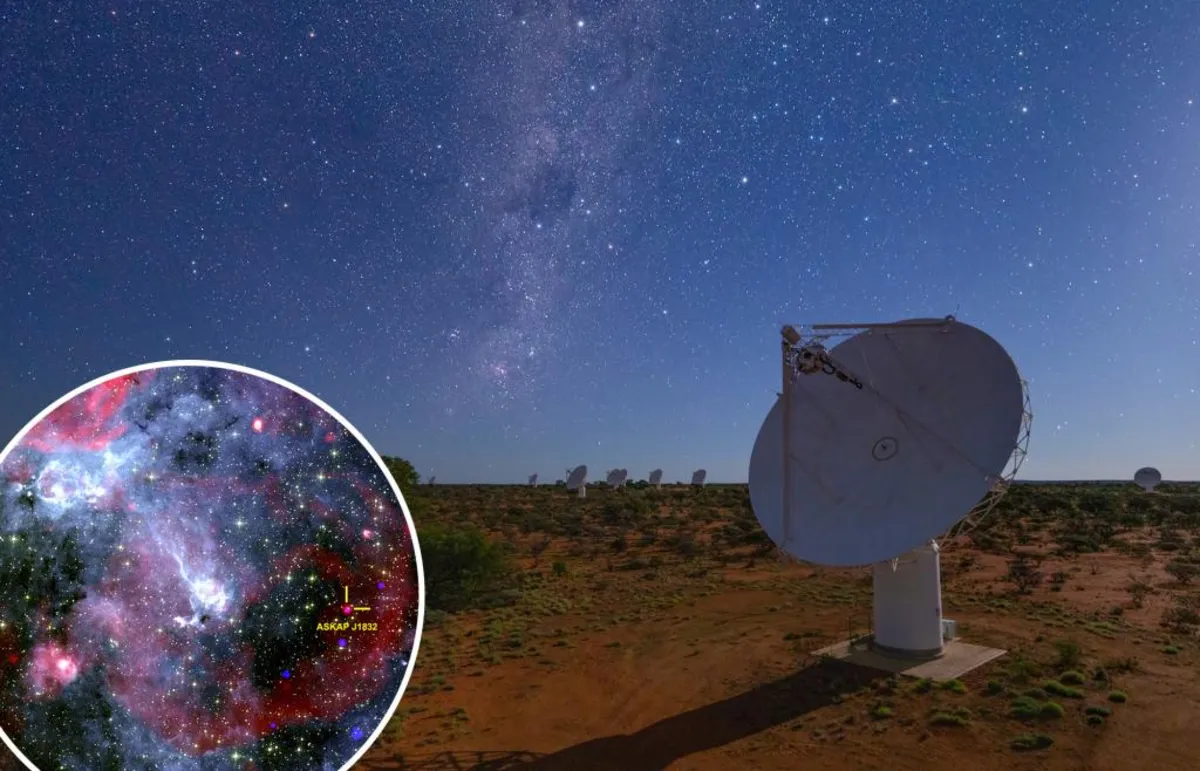
The truth is out there, and recent discoveries in astronomy are raising eyebrows and sparking excitement among scientists. Astronomers are stunned by an unidentified object flashing strange signals from deep space, named ASKAP J1832-0911. This extraordinary cosmic body was detected by the Australian Square Kilometre Array Pathfinder (ASKAP) in conjunction with NASA’S Chandra X-ray Observatory, the most powerful X-ray telescope on our planet.
Andy Wang, an astronomer at Curtin University in Perth, Australia, expressed his astonishment, stating, “It is unlike anything we have seen before.” The object, ASKAP J1832-0911, exhibits a unique behavior by emitting pulses of radio waves and X-rays for two minutes every 44 minutes. This fascinating discovery has been documented in the prestigious journal, Nature.
ASKAP J1832-0911 has been classified as a “long-period transient” or LPT. This classification refers to a cosmic body that emits radio pulses at intervals that can range from a few minutes to several hours. Wang and his research team theorize that the mysterious object could be a dead star, but they remain puzzled about its peculiar behavior of "switching on" and "switching off" at these long, regular, and unusual intervals.
Wang suggests two intriguing possibilities regarding the nature of ASKAP J1832-0911. It could be a magnetar, which is the core of a dead star characterized by powerful magnetic fields. Alternatively, it may represent a binary star system, where one of the stars is a highly magnetized white dwarf, a low-mass star nearing the end of its evolutionary journey. However, Wang emphasizes that even these theories do not fully account for the strange observations they are making.
This groundbreaking discovery could signify a new type of physics or prompt the development of novel models of stellar evolution. Wang and his team are eager to continue their exploration and hope to detect similar signals using radio waves and the Chandra X-ray Observatory. A subsequent discovery could provide critical insights into the nature of these long-period transients (LPTs) and expand our understanding of the universe.
ASKAP J1832-0911 is not the only exciting astronomical finding making headlines. Earlier this month, researchers at Cambridge University Press announced the detection of a signal extracted from interstellar noise, which could suggest the presence of active biology on another planet. Such discoveries highlight the thrilling and rapidly evolving field of astronomy, where each revelation brings us closer to understanding the cosmos.